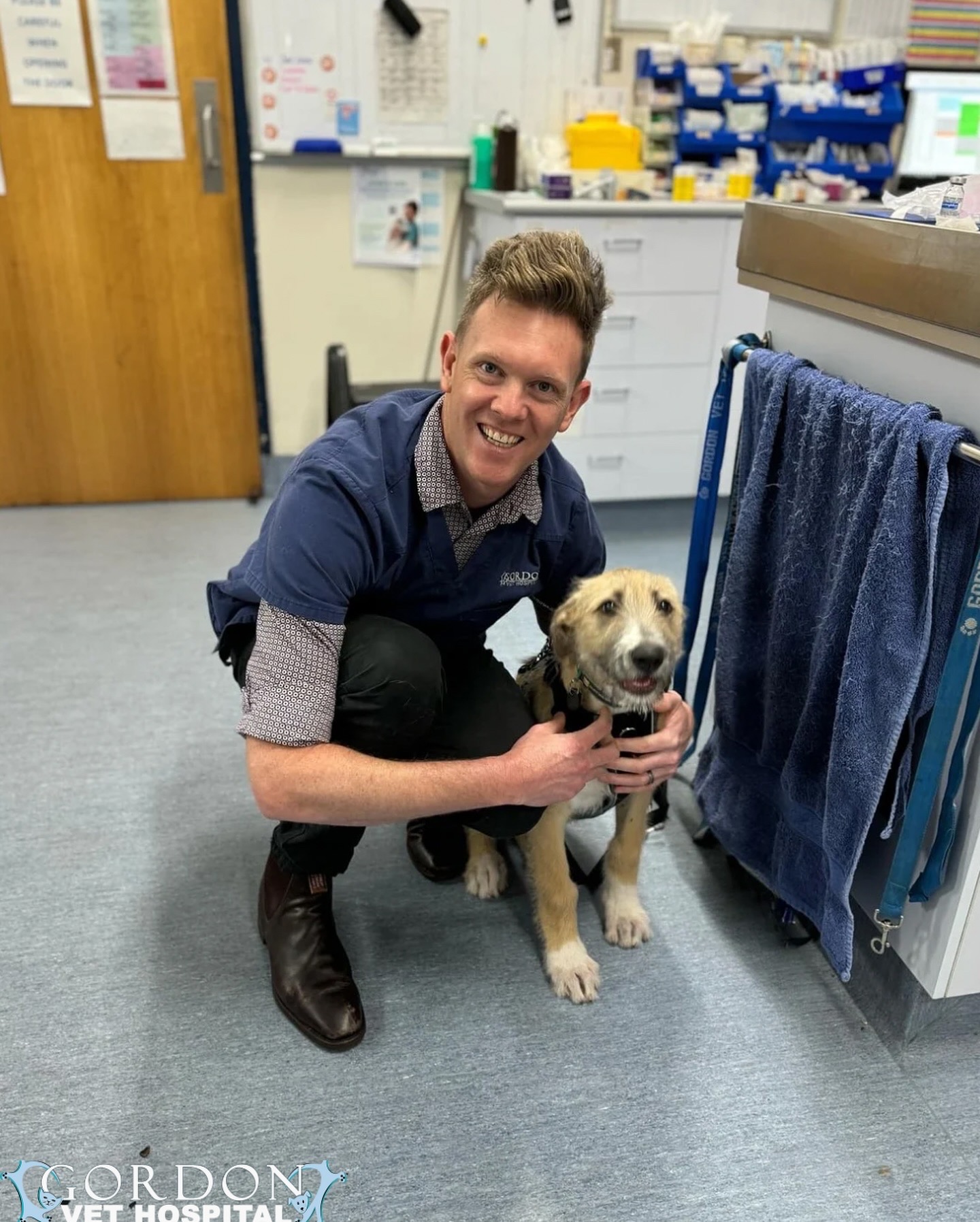Baby Canines
By Kay Hisano | Dated October 31, 2024
Base narrow canines refer to a dental condition in dogs where the lower canine teeth are positioned too close together or are angled inward, rather than aligning properly in the mouth. This misalignment can cause the lower canines to push against the roof of the mouth (hard palate), which may lead to discomfort, pain, and potential damage to the soft tissues or even the bone of the palate. This is often diagnosed during your dog’s first puppy checks.
When Juno came in for her initial puppy vaccination consult, Dr. Tahlia noticed that Juno’s lower baby canines were impinging into the upper hard palate. Due to the severity of the base narrow canines, Juno’s baby canines were extracted to prevent further trauma and allow for the permanent teeth to grow into the correct alignment.

Causes:
- Genetics: Some dogs are born with this condition due to their inherited jaw structure.
- Retained baby teeth: If deciduous (baby) teeth are not shed properly, it can interfere with the alignment of the permanent teeth.
- Improper jaw development: Developmental abnormalities in the jaw can also contribute to the condition.
Clinical Signs:
- Pain or discomfort, especially when chewing or closing the mouth
- Reluctance to eat
- Drooling
- Bleeding from the mouth (in severe cases)
- Visible trauma or ulcers on the roof of the mouth
Treatment Options:
Depending on the severity of the signs there are a couple of treatment options that your veterinarian may suggest.
- Selective Extractions:
- Extraction of the baby (deciduous) teeth if they are contributing to the issue. Sometimes, the adult teeth will align correctly once the deciduous teeth are removed.
- In extreme cases, extraction of the offending adult canine teeth may be considered if the risk of ongoing trauma is too high.
- Ball Therapy:
-
- A non-invasive method where the dog is encouraged to chew on a soft rubber ball that is larger than the dog’s jaw. This helps guide the canine teeth into a more appropriate alignment as the dog chews.
-
- Specialist Referral Options
- Orthodontic Intervention:
-
- Orthodontic appliances can be used to slowly reposition the teeth to a more natural alignment. This is usually reserved for more severe cases or for younger animals whose teeth are still developing.
-
- Crown Reduction with Vital Pulp Therapy:
- Reducing the height of the canine teeth (crown reduction) can prevent them from damaging the roof of the mouth. This procedure is typically followed by vital pulp therapy to preserve the health of the tooth.
- Orthodontic Intervention:
The success of treatment depends on the age of the dog and the severity of the misalignment. Early intervention in young dogs tends to have better outcomes.
